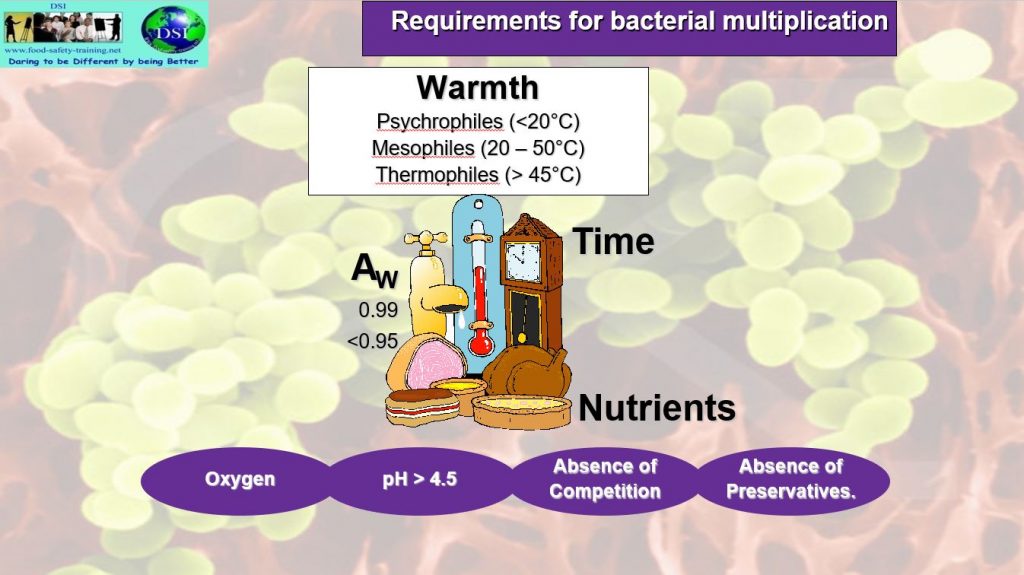Requirements for bacterial multiplication
Food (nutrients) such as protein, fats, vitamins, minerals carbon, sugar, high protein food such as meat, fish and dairy produce.
Moisture (water activity/available water) Needed to transport nutrients and waste Pure water aw 1.00 Bacteria’s preferred range 0.99 – 0.95
Some foods don’t have enough “available water” for growth. Some bacteria can survive dehydration as spores. Staphylococcus aureus can survive relatively high salt levels.
Warmth
Although the Danger Zone is quoted as 5°C- 63°C the range for most rapid multiplication of pathogens is usually 20°C-50°C (37°C body temp).
Classification of bacteria based on temperature
Psychrophiles (below 20ºC) • Include bacteria, which cause spoilage in refrigerator e.g. pseudomonas (a slime bacteria)
• Important pathogens include listeria and Clostridium botulinum type E
Mesophiles (20ºC to 50ºC) Include most of the common pathogens that cause food poisoning
Thermophiles (>45ºC) Important in the canning industry and can cause blown cans
Psychrotrophes
Capable of multiplying below 20ºC but prefer above 20ºC
Time
Reproduction by binary fission (splitting into two). The time taken for a complete cell cycle (effectively the number of bacteria doubles) is called the generation time (tg)
Speed varies with presence or absence of other requirements.
If optimum conditions it can be every 10 minutes 1,000-1,000,000 in 1 hr 40 mins (worst case scenario). Where tg = 10 minutes 1 pathogen will become approximately 17 million in just 4 hours.
Unfortunately pathogens do not affect the smell, taste or texture of food (unlike spoilage bacteria).
Vegetative state when growing and multiplying Examples:
Salmonella
at 37°C tg =20 minutes
at 10°C tg = 10 hours
E coli O157/Clostridium perfringens
at 45°C tg = 10 minutes
Listeria monocytogenes
at 4°C tg = 30 hours
lag phase 2 days in milk

